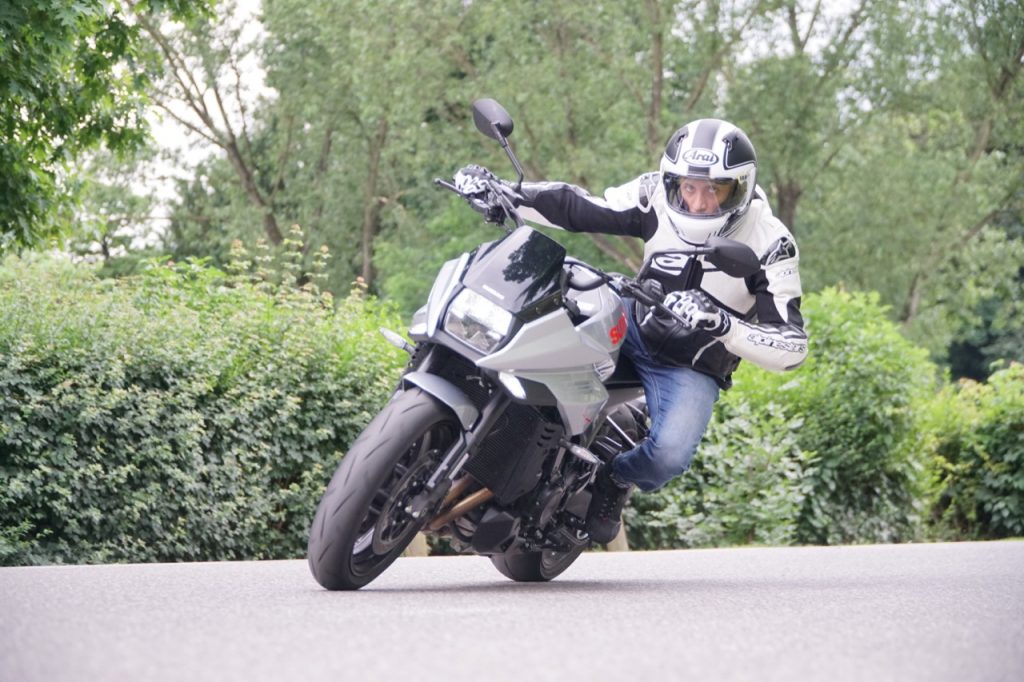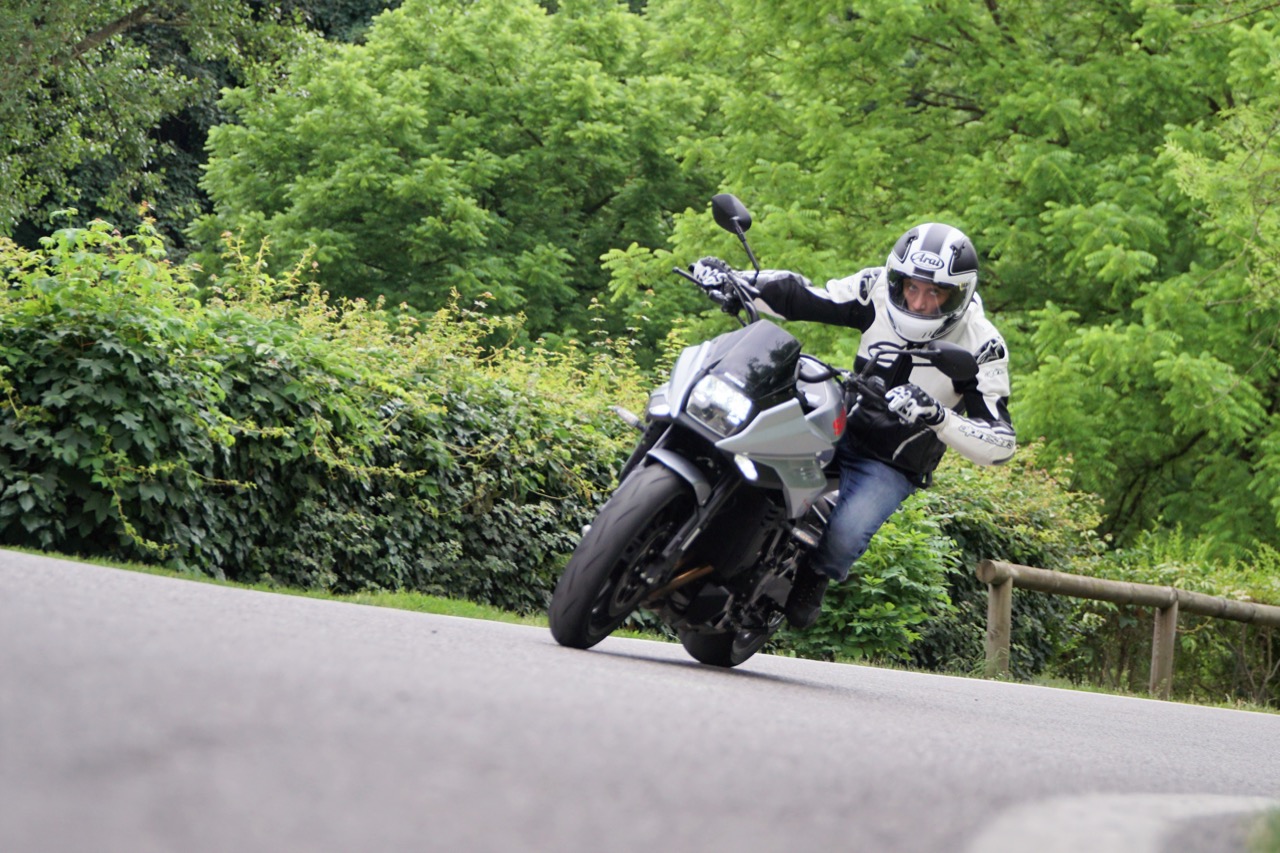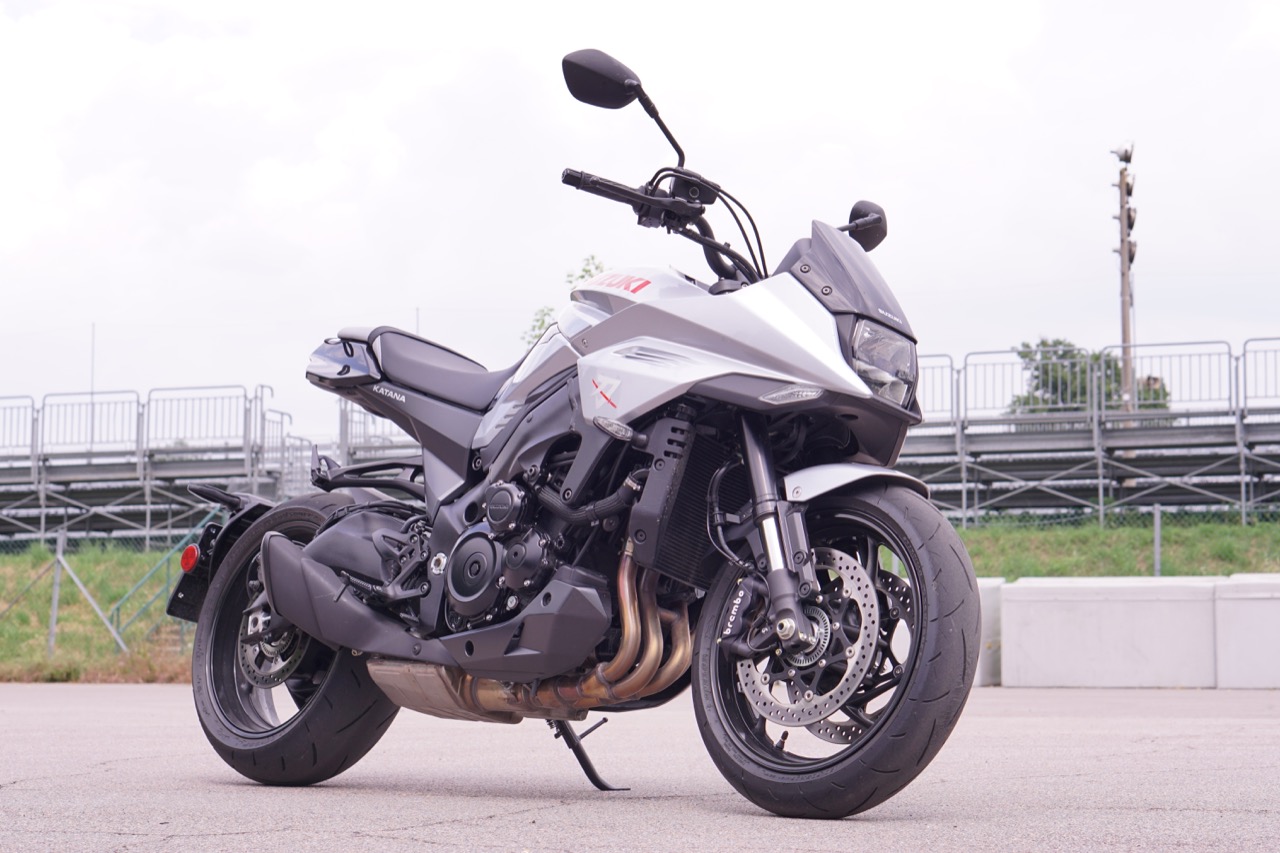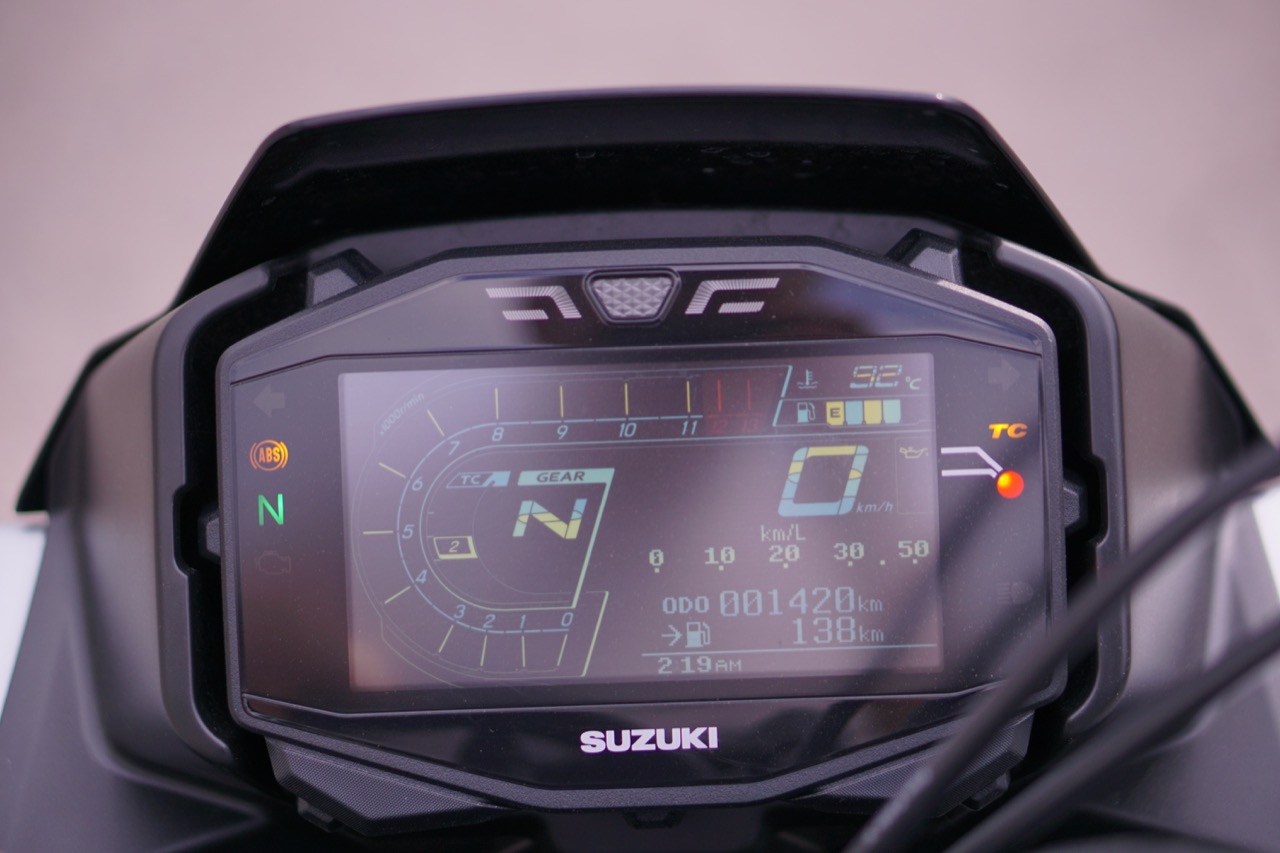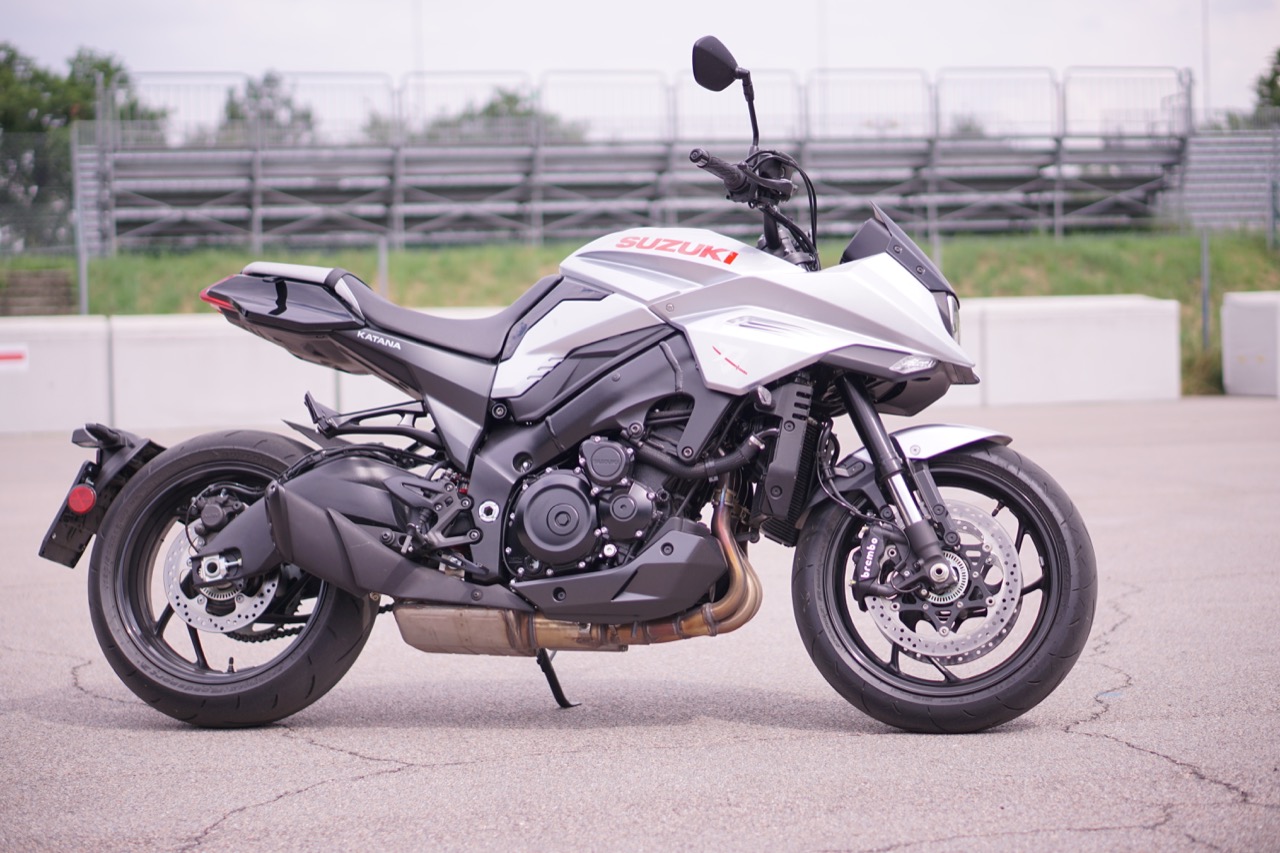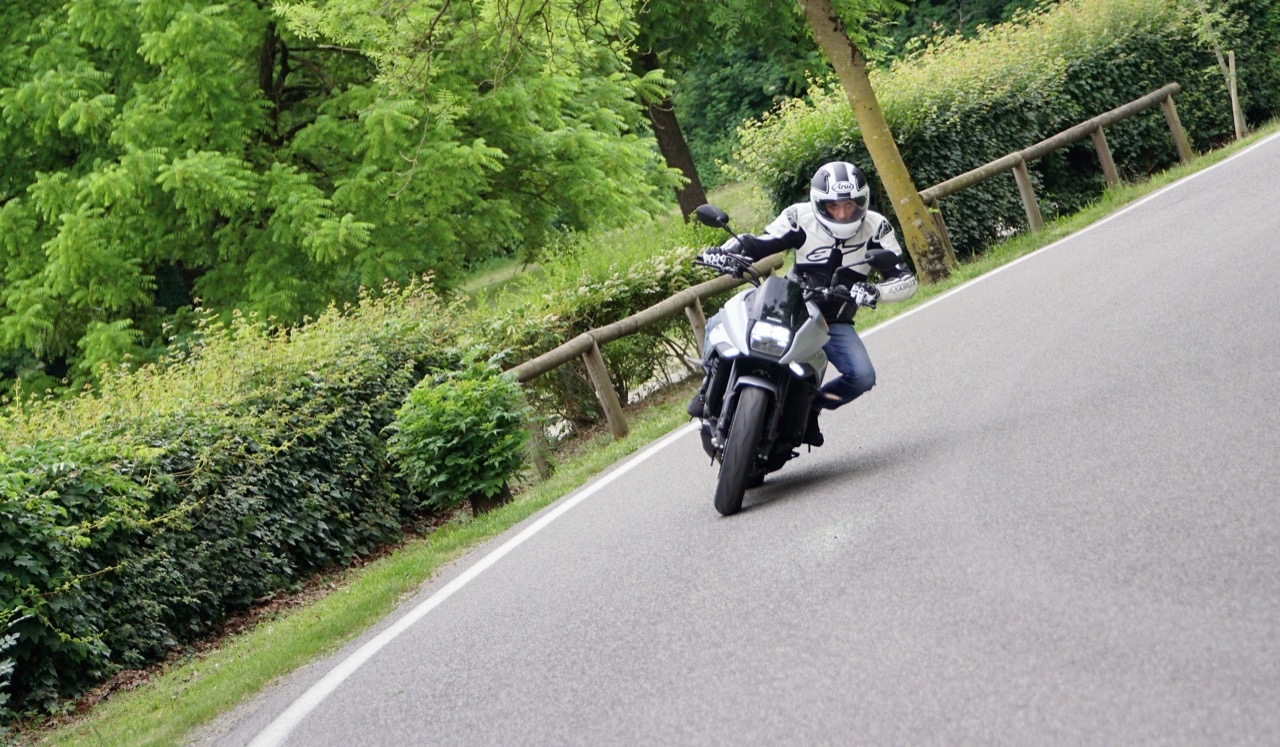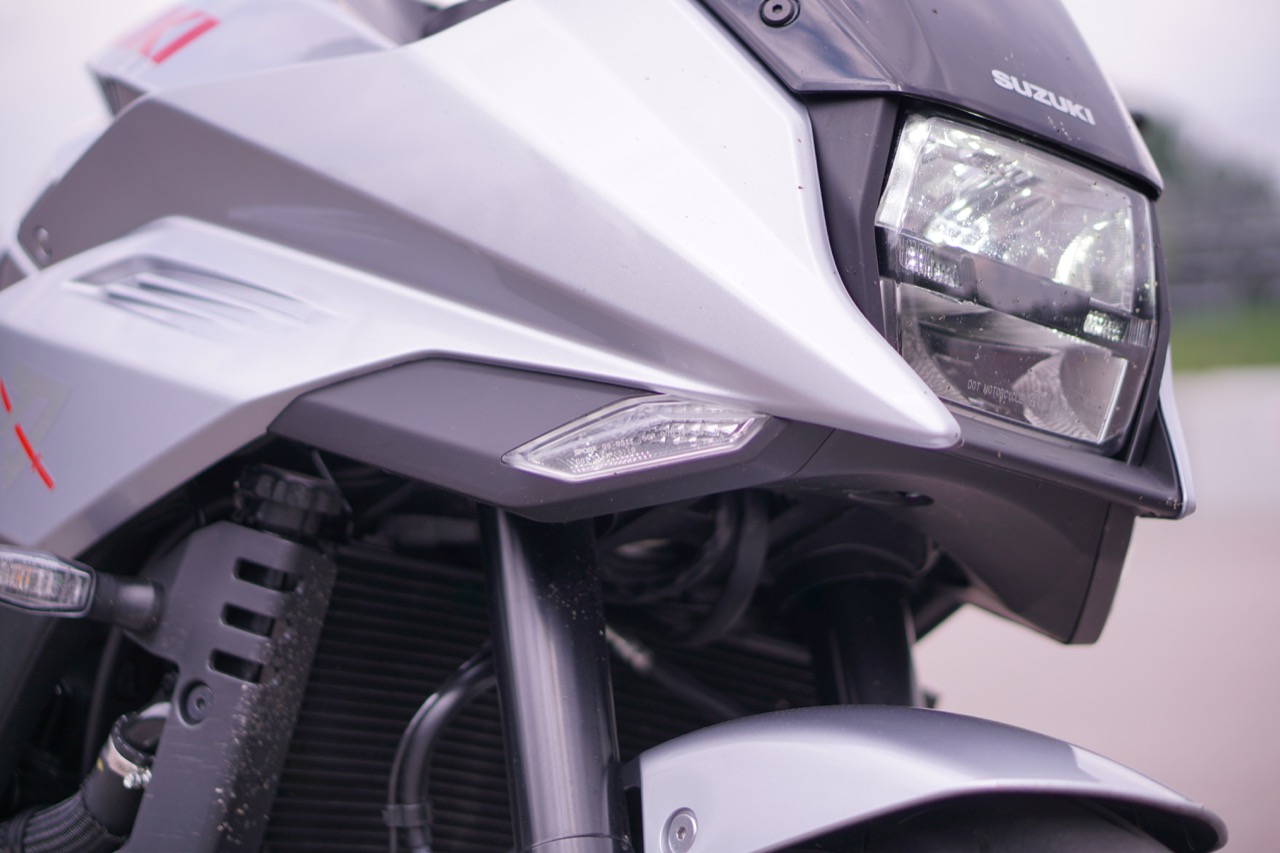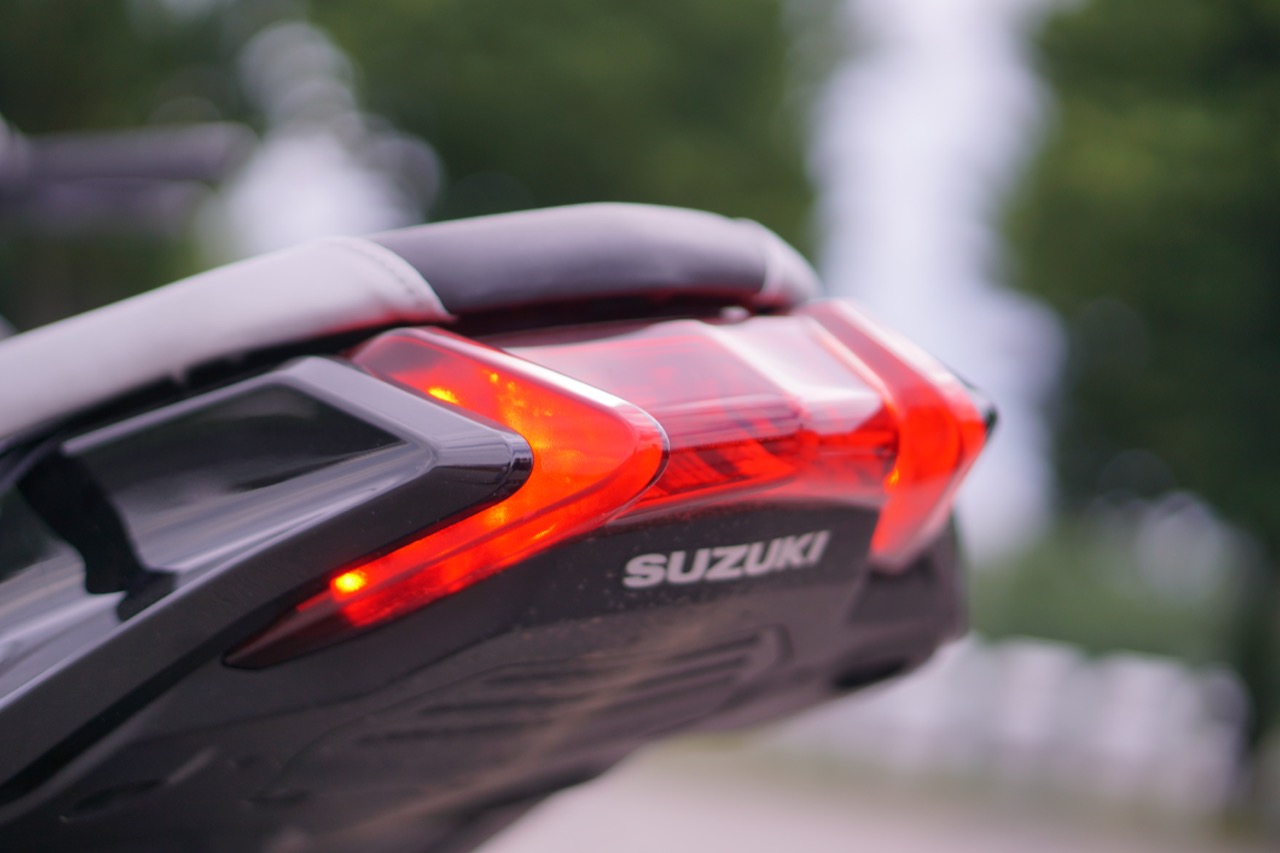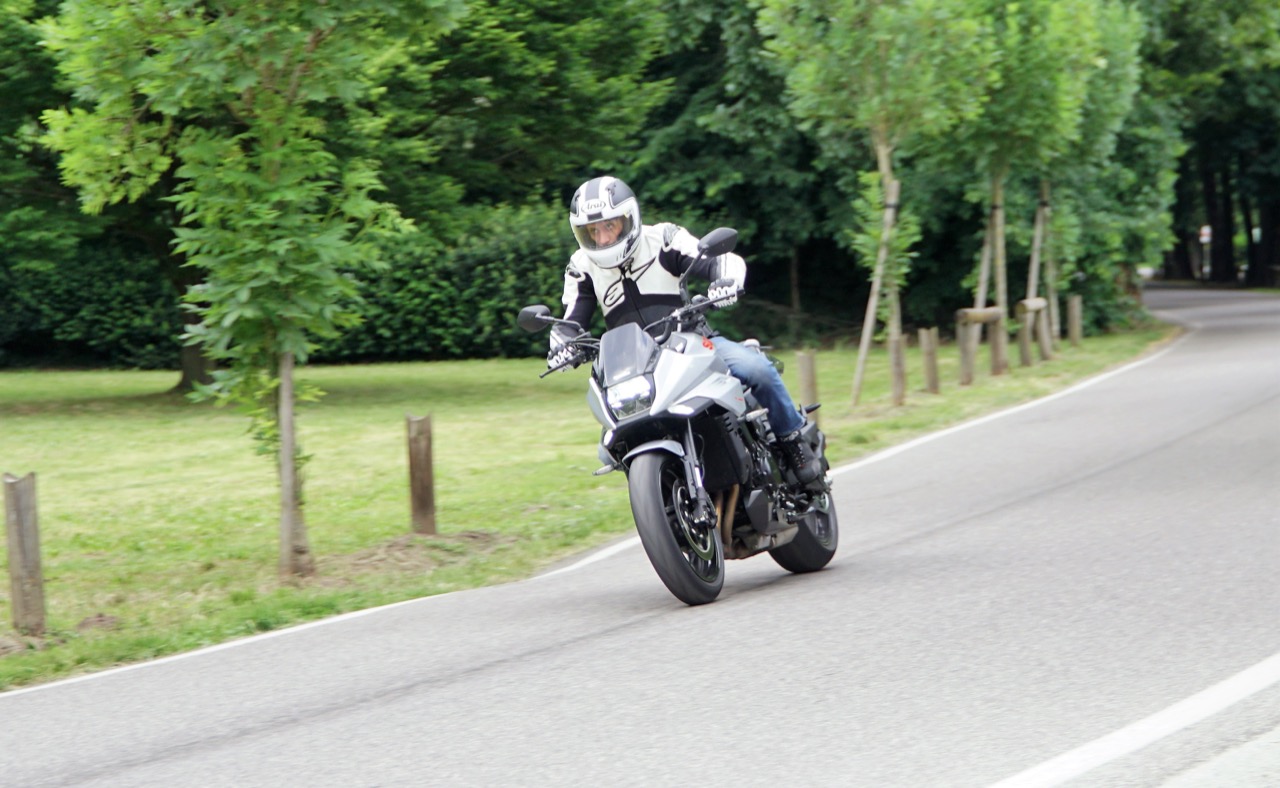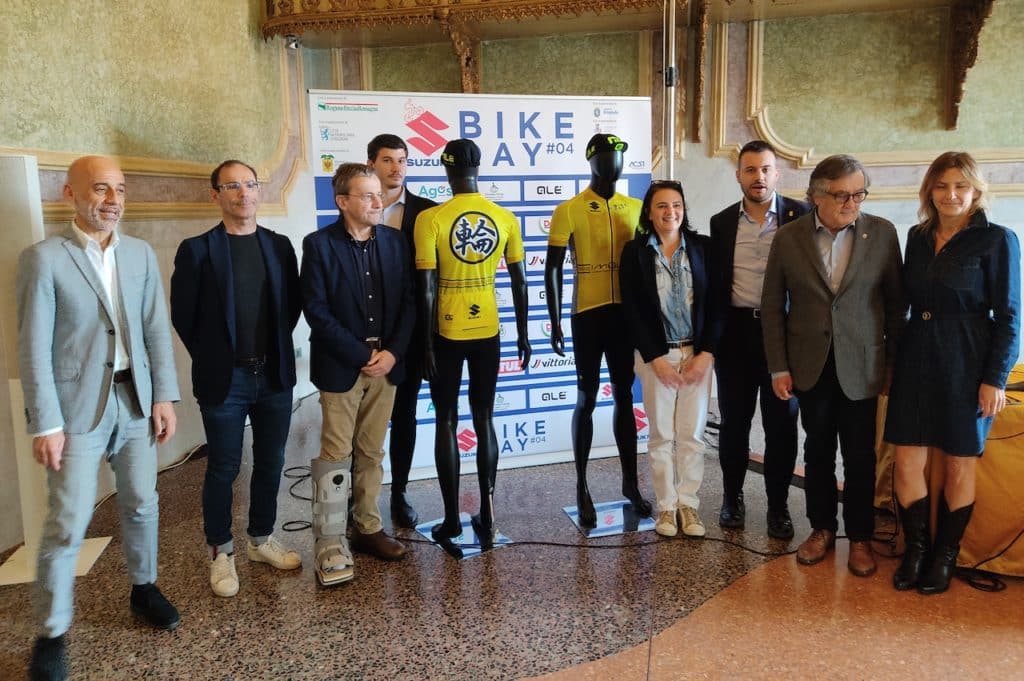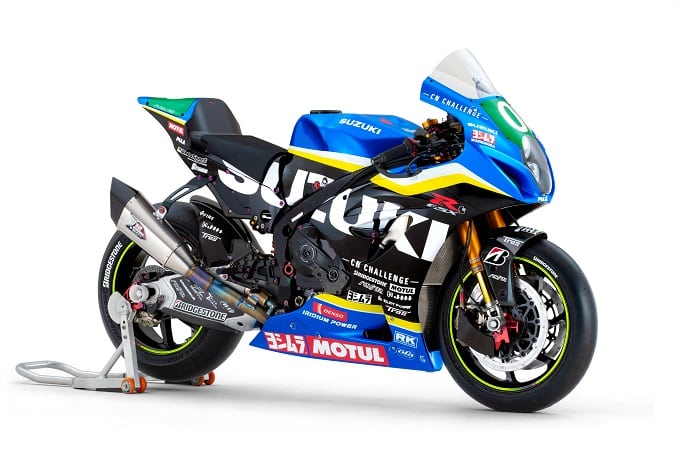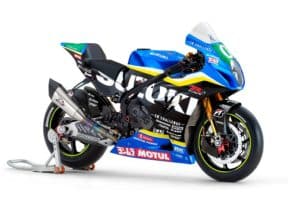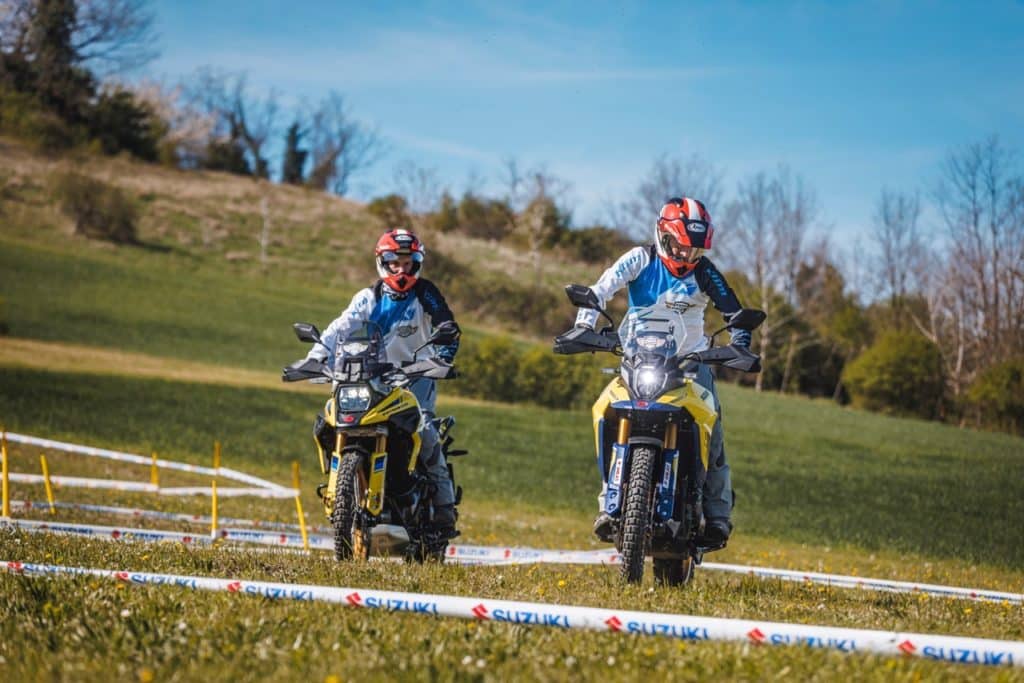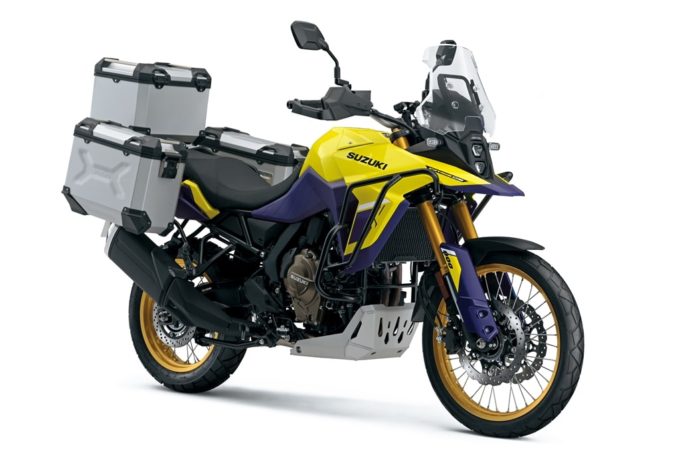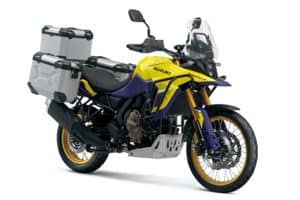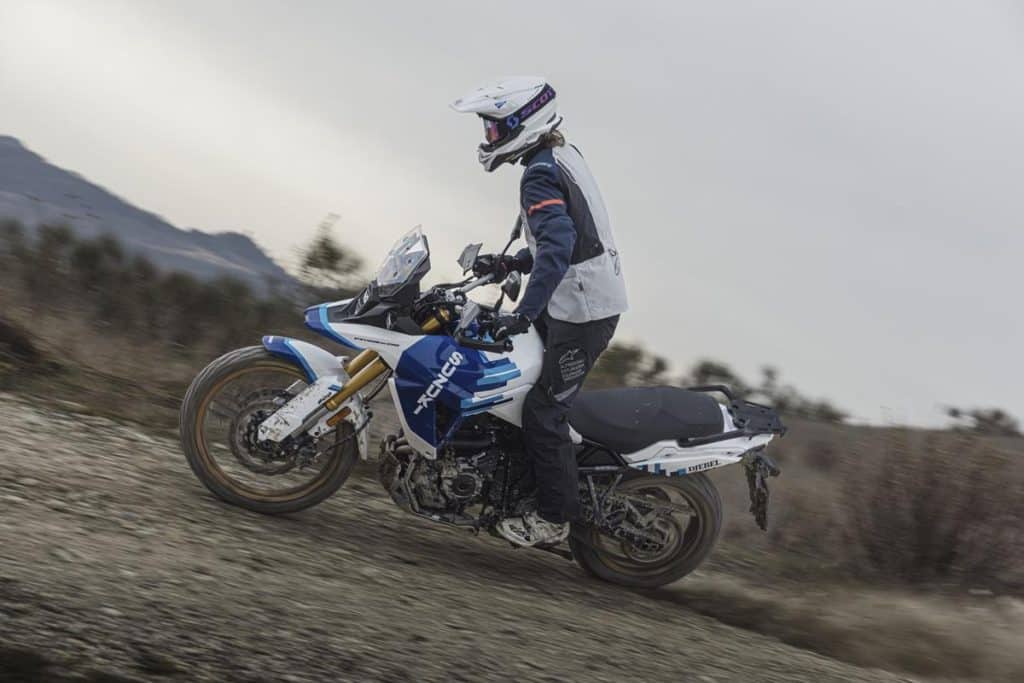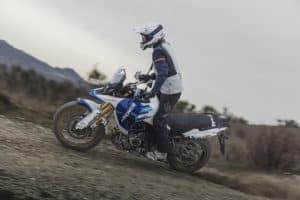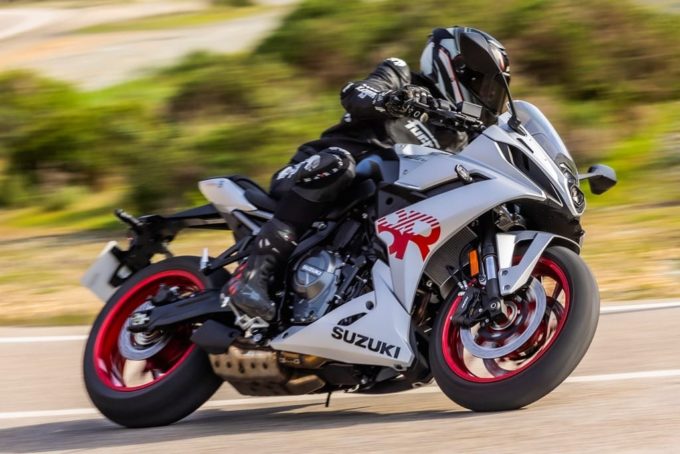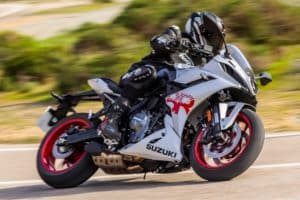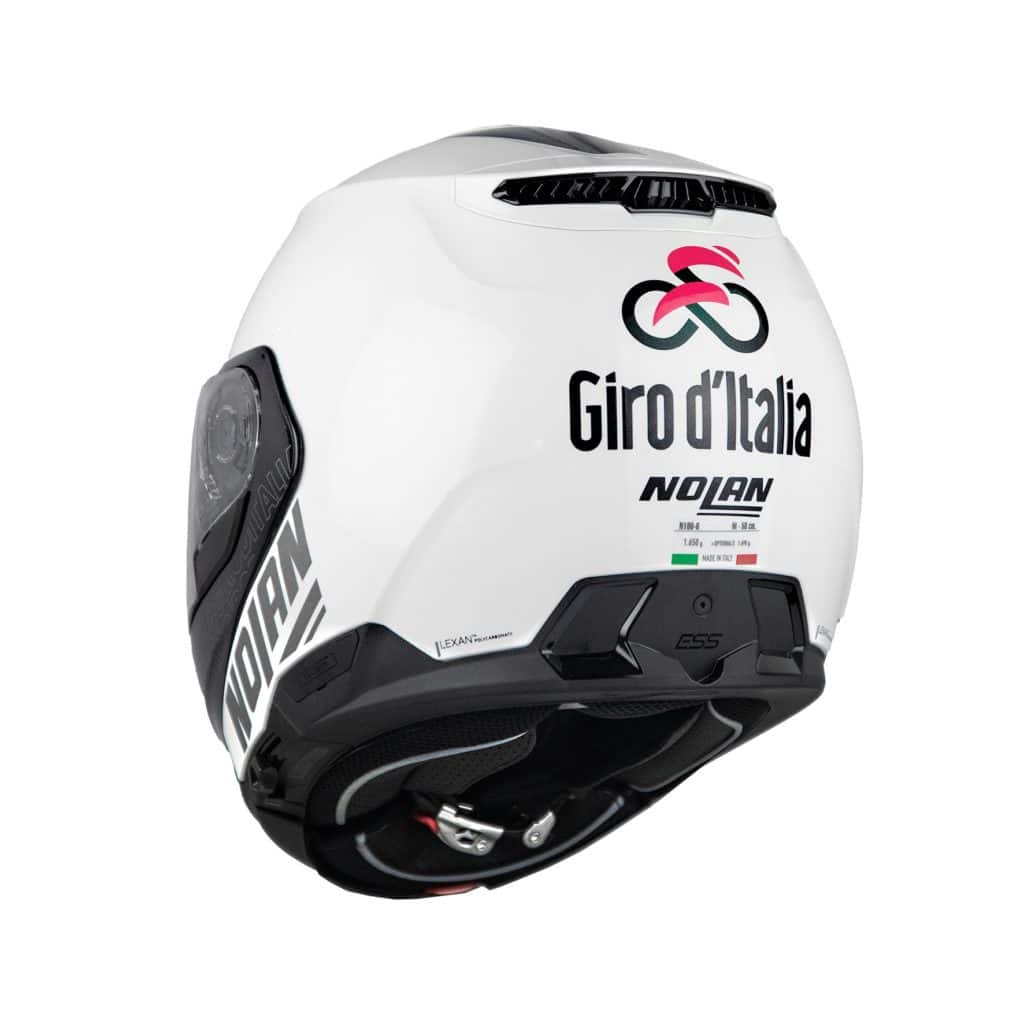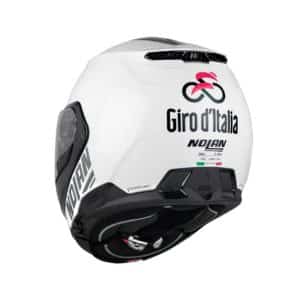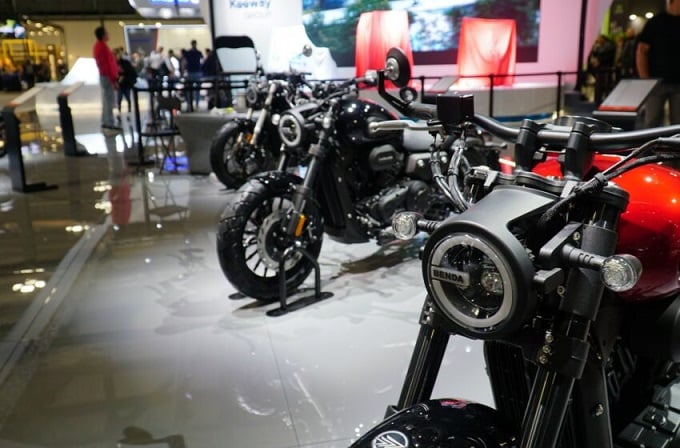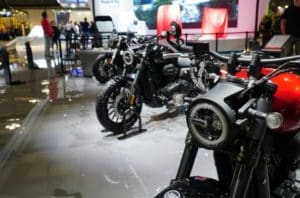New Suzuki Katana: the return of a legendary motorbike [ROAD TEST]
Supernaked “traffic light burner”, aggressive 80s style look
Il 1980 it was a very particular year for the international motorcycle scene because Suzuki, at the salon of Neighborhood, presented the katana.
The motorcycle immediately attracted the attention of all the press as it was a very innovative and completely unconventional project.
What made this one stand out Suzuki Its design was very futuristic and unique compared to any other motorbike. In fact, it was designed by engineers from the automotive sector who had taken into consideration, during development, not only the aesthetic aspect but also ergonomics and aerodynamics.
Initially the project was supposed to allow the addition of a large windshield and a fairing, but the bike was so popular with its minimalist and sporty design that these two elements were never added and it was put on the market without further modifications.
The new Suzuki Katana takes up the aesthetics of the famous model of 1980 reviewing it in a modern key.
The name reflects the precise and sharp lines of a rather aggressive but perfectly balanced motorcycle, just like the legendary sword katana of the Japanese samurai.
This motorcycle, made by Engine Engineering based on the Italian's design Rodolfo Frascoli and exposed to EICMA 2107, was initially born as a design exhibition (Katana 3.0 concept) ……… a bit like what happened for the katana of the 1980.
And as then, the enthusiastic comments of the public and professionals convinced the management of Hamamatsu to put this model into production.
We will never know whether it is a re-enactment of a two-wheeled myth loved by many geeks or an excellent marketing gimmick, but this does not take away from the fact that Suzuki has created a truly unique and different motorbike.
Equipment and Design
The aesthetics of the new katana it's impactful! Sharp, streamlined and different from any other motorbike, it almost has a cheeky, challenging attitude and at the same time has that retro touch that is so fashionable today.
The front half-fairing, the rectangular headlight and the short, stubby tail are its distinctive features that make it recognizable at a glance.
The skilful reinterpretation carried out by Suzuki it blends classic and modern details perfectly. The very refined design catches the eye with refined details and excellent finishes, the upper handlebar plate and the tightening nut of the steering head axle are in fact impeccably made.
The headlight assembly a LED , powerful and with a classic style, pays tribute to its ancestor by marrying harmoniously with the front fairings.
The sharp and sharp lines of the fairings and tail integrate perfectly with the softer ones of the tank, giving the bike a strong personality that looks to the past while projecting itself towards the future.
The dark shades of katana, characterized by red chromatic details, emphasize sportiness and give the motorbike a particularly refined and fashionable look.
This Suzuki it doesn't want to be a simple super naked “gunshot” but a vehicle capable of combining traffic light burning performance with such versatility that it can also be used for daily travel, all with a "special one" design.
Precisely to accommodate this type of use, the ergonomics have been studied down to the smallest detail for 360-degree use.
The instrumentation consists of a compact and sporty LCD instrument panel which provides the pilot with all the necessary information clearly in all light conditions.
Inside the complete digital display there is a gear indicator, average and instantaneous consumption, the rev counter, the odometer, the battery voltage, the fluid temperature, the clock and the traction control level.
Electronics
The electronics of katana it is complete but very "basic" compared to the latest generation motorbikes, in fact only the traction control and theABS while the engine maps, the quickshifter and the ride-by-wire throttle control are absent.
Nothing traumatic, the bike works great even with non-race replica electronics, we are too used to it nowadays and, even if we may never use them completely, we want to have all the latest generation electronic gadgets on our bikes .
The anti-lock system ABS is provided by Bosch and its data on wheel speeds are also used by the traction control which makes power management simpler and safer, especially on low-grip surfaces.
The TC acts on the ignition to modulate power delivery and can be adjusted to 3 intervention levels or deactivated via a command on the left electrical block.
There are also two other systems, the Suzuki Easy Start System and Low RPM assist. The first facilitates starting the engine while the second makes starting easier by raising the level of the minimum rotation speed when engaging first gear.
Engine and chassis
The engine, of 999 cc, is the real highlight of the new one katana given that it derives from that of the famous one Suzuki GSX-R1000 K5, a motorcycle with exceptional performance that scored in 2005 an authentic revolution among super sports cars.
The Hamamatsu engineers managed to find an optimal setup for road use thanks to the adoption of a new exhaust system 4-in-2-in-1 characterized by a small and aggressive black silencer.
This engine was selected for its long bore and stroke characteristics, respectively 73,4 mm e 59 mm, with pistons with a flat crown profile that allow you to maintain ample power at all rpm.
The performance is very respectable given that this 4 cylinders in line delivers 150 cv of maximum power a 10.000 rpm e 108 Nm of torque a 9.500 laps.
Truly respectable numbers but much more exploitable than you think thanks to the use of a very sweet accelerator response and a great availability of torque at low and medium speeds which make it perfect for any speed.
As regards the chassis, Suzuki has decided not to do anything crazy or experiment and has chosen to select elements tested and refined over time on other bikes.
The new katana it inherited the compact twin-spar aluminum frame of the naked GSX-S 1000 and the powerful and massive swingarm of the GSX-R 1000 L6. The latter was chosen for its aesthetic and rigidity qualities and also integrates the side license plate holder arm.
These solutions have made it possible to obtain a very compact and aggressive motorcycle.
On the other hand, the tank capacity is only 12 liters and the use of robust but heavy materials tips the scales at well 215 kg in running order.
Suspensions were chosen to give the motorcycle high stability and driving precision Kayaba with an upside down fork at the front 43 mm fully adjustable while at the rear a monoshock absorber that can be set in spring preload and rebound.
The braking system is of high quality and boasts a pair of powerful monobloc calipers at the front Brembo radially mounted with discs 310 mm that work in symbiosis with the system ABS.
At the rear, however, there is a single single-piston caliper Nissin with a record of 250 mm.
Guide
Getting on the bike you immediately realize that the position is different from what you would expect from the majority of naked sports bikes because we find ourselves with our back erect and with our wrists lightly placed on the front end.
You immediately feel at ease, with a sensation of total control of the vehicle and the large, padded saddle further enhances riding comfort.
The only slightly negative note is given by the high and backward footrests which force the legs to draw a narrow angle of clear sporting inspiration, penalizing comfort (I am 1,82 m tall).
Once you turn the key in the ignition, the LCD instrumentation lights up and the company logo appears. Suzuki Katana, a small detail but very scenic and cool (pass me the term).
The real magic, however, occurs when we press the power button 4 cylinders in line. The engine comes to life and a powerful and dark voice emerges from the small and aggressive exhaust terminal, almost as if it were a racing exhaust. It's one of those exhaust sounds that can change your mood even on the worst of days, giving you a big smile under your helmet.
To this day I still struggle to understand how Suzuki, considering all the restrictions in force, manage to approve a motorcycle with such a beautiful and satisfying exhaust sound (Long live Suzuki!!).
By engaging first gear and keeping the clutch pulled, the engine speed automatically increases to approximately 1.500 rpm making us understand that the Low RPM assist it's actually doing its job.
Once in motion we are impressed by the riding feeling that the bike transmits to us right away.
The pilot does not need to cover several kilometers to get in tune with the katana, but already after just a few metres, the bike, having such a "healthy" and well-tested chassis, does everything to make you feel at ease.
The engine is truly free from any criticism given that it is very regular, elastic, rich in torque and also capable of an exciting acceleration up to approximately 12.000 rpm, all this accompanied by the scream of the exhaust and the sharp and exhilarating sound of the intake system.
The always constant thrust and the elasticity of the engine allow you to go down to sixth gear almost 1.500 rpm and to resume without jolts or uncertainties.
During the delivery period, two steps are perceived: the first is noticed a 4.000 laps where the engine starts to push with determination and force but without being exuberant while the second is at 7.000 laps, threshold beyond which this 4 cylinders he gives vent to all his cavalry by devouring laps very quickly and extending with impetuosity up to the limiter.
The great thing is that this remarkable performance is extremely exploitable thanks to the great qualities of this engine and the calibration of the accelerator. It can be sporty and impetuous when required, sweet and gentle if you act delicately on the throttle.
The changes made by the Hamamatsu technicians were concentrated in this direction and this was one of the reasons why they considered it unnecessary to use electronics that were too advanced and expensive.
Between the curves there katana it behaves in an exemplary manner, proving to be very stable and at the same time agile when changing direction despite the size of the rear tire (190/50), which is now almost out of use because it is characterized by a profile that is too flat.
Credit for this behavior must be partly attributed to the excellent Dunlop Roadsport 2 as original equipment which have always guaranteed us feeling and high performance in all riding conditions.
The chassis is precise, stable, sharp like a real one katana and conveys a feeling of absolute control.
Trajectories can be traced surgically with the knowledge that the bike will follow the commands without moving a millimetre.
The front end is one of the strong points of this one Suzuki. It proves to be granitic when braking and when cornering it allows katana to maintain exemplary rigor, it seems that we are following an imaginary track.
Even in the most aggressive braking or in the most cheerful corner entries you can always count on him and when you exaggerate, arriving a little "long", he always puts a "patch" allowing you to correct the trajectory without incurring irreparable damage.
The braking system proved to be up to the task, proving powerful, modular and constant in performance. It's a shame that during more intense braking theABS, thanks to a calibration aimed at safety, is a little invasive, slightly lengthening the stopping distances and "dirtying" the trajectories a little.
The traction control, however, was well calibrated: more conservative levels 2 e 3, sportier at level 1.
In mode 1 it even allows the rear wheel to skate just enough to close the trajectories better, transmitting the sensation of being "big handles".
La katana it should be considered a bit like an old-fashioned analogue motorbike, with little electronics and a lot of "good mechanics". Driving it almost feels like a dive into the past when everything was in the pilot's hands and there were no traces of electronic controls.
These sensations make this bike almost a thoroughbred that impeccably embodies the concept of a naked sports car.
Perfect for more experienced riders, for those who are just nostalgic for their ancestor or for those who want to stand out among trendy venues with an aggressive motorbike and a look that doesn't go unnoticed.
Price
The new Suzuki Katana it is available at dealerships in the classic color grey/black and in version total black a 13.690 €.
With this figure, 1.000 euros more than her sister GSX-S 1000 from which it derives, you take home a sporty motorbike, versatile and suitable for both seasoned and less experienced riders.
Friendly, easy to ride, extremely high-performance and meticulously built, all with a truly unique and unmistakable design that you either hate or love.
PRO
Granite front end, engine, chassis, riding position.
AGAINST
Very simple electronics, lack of quickshifter, weight, invasive ABS.
APPAREL
Arai Renegade-V helmet
Alpinestars SP-X leather and fabric gloves
Alpinestars Atem leather jacket
Photo: Alessandro Ranzenigo
if you want to always be updated on our news
Follow us here

